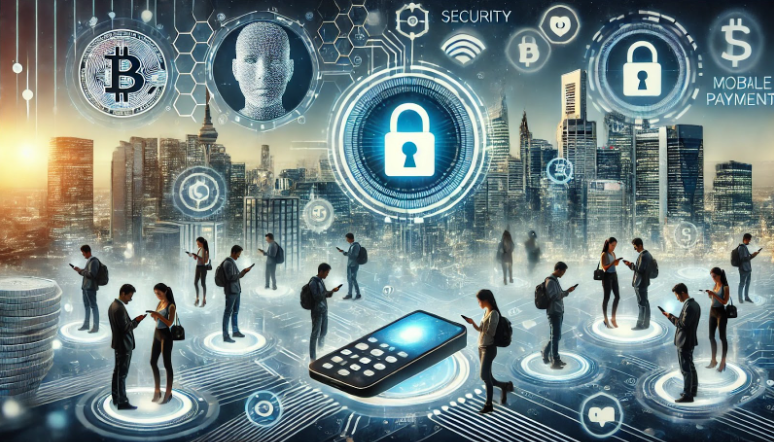The Present and Future of Mobile Payments, Industry Outlook, and the Need for Security

1. The Present of Mobile Payments: The Age of Convenience
Today, mobile payments are changing the very fabric of how we live. Imagine a world where you never need to dig around for cash to grab a coffee—it’s all just a tap on your smartphone, and you’re all set. Mobile payments are now used for everything from shopping and public transit to paying for all kinds of services. With just a few taps, transactions are completed instantly, making it incredibly fast and convenient. As smartphones become more widespread worldwide, mobile payments are touching nearly every corner of our lives and continuously expanding their reach.
2. The Future of Mobile Payments: Could It Get Even Better?
Just imagine how mobile payments might evolve in the future—it’s mind-blowing! Beyond today’s simplicity, what if the technology itself could advance and transform how we interact with the world? Picture this: you walk into a store, pick up whatever you need, and simply leave. Facial recognition automatically handles the payment. Or perhaps it’s a wearable device on your wrist that detects purchases as you go. Sounds like a sci-fi flick, right? Well, such scenarios might actually become an everyday reality. Technology is sneaking into our routines, making life easier in ways we might not have thought possible. Doesn’t it give you a bit of a thrill, thinking about those futuristic worlds from the movies possibly becoming part of our own lives?
3. The Mobile Payment Industry Outlook: How Far Can It Go?
The mobile payment industry is experiencing unprecedented growth. Imagine this: in some parts of the world, like Africa, even those without bank accounts can now send and receive money, all from their smartphones. It’s amazing—what used to require tedious paperwork and long lines at the bank can now be completed with just a few taps. Small farmers, for instance, can sell their crops and instantly receive payments, helping them support their families and grow their businesses. Mobile payments aren’t just about making transactions easier; they’re reshaping entire communities and making a real impact on people’s lives. As more people embrace mobile payments, the industry is poised for even greater expansion, stimulating growth in financial services globally.
4. The Need for Security: A Hidden Threat Behind the Convenience
While mobile payments are convenient, there’s an ever-present risk behind that ease. Just the other day, a friend of mine was hacked while making a mobile payment. Before she even realized it, her money was gone. She ended up spending the entire day on the phone, going back and forth with the bank, trying to sort things out. Watching her experience made me think: mobile payments may be convenient, but that convenience also comes with vulnerability. It’s like carrying around a digital wallet that anyone could potentially open. That’s why it’s so crucial to take security seriously. We need to be more cautious—whether that means using two-factor authentication or avoiding suspicious links and websites. It’s these small habits that can ultimately protect our money, our data, and our sense of security.
5. Advances in Security Technology: Finding the Solution
Thankfully, security in mobile payments isn’t just a problem—it’s an area where technology is making significant strides. With biometrics becoming mainstream, we can now use unique traits like fingerprints, facial features, and even our voices for authentication. It’s like having a password that only you possess. Many people are already scanning their fingerprints or using facial recognition to authorize payments, confirming, “Yes, it’s really me.” And let’s not forget artificial intelligence, which monitors our transactions and alerts us to any unusual activity. These advancements in security technology are making 소액결제현금화 increasingly safe. Sure, hackers are constantly finding new ways to break in, but security technology is evolving just as fast to keep us protected.
6. The Role of the User: Protecting Yourself
No matter how advanced the technology gets, users play a crucial role in keeping things secure. It’s like locking your doors at night—even if you feel safe, you’d never just leave them open, right? The same goes for mobile payments. Simple actions like using your data network instead of public Wi-Fi, choosing a strong password, and avoiding unfamiliar sites can make a huge difference. Instead of being shocked when someone says, “I got hacked,” we should all start building smart habits to prevent it. In the end, we are our best defense when it comes to protecting our financial information.
7. The Future of Mobile Payments: Trust and Innovation Intersect
Thinking about the future of mobile payments feels like staring at an ocean of endless possibilities. As technology continues to advance, people are demanding payment methods that are both secure and innovative. Biometric authentication—scanning your fingerprint, your face, even the way you sound—is paving the way for safer, more personalized transactions. Imagine a world where you don’t even need to carry a wallet anymore; with just a scan or tap, your transaction is complete. Ultimately, the future of 소액결제현금화 hinges on trust. The more confident people feel in using these services, the faster this industry will grow. Mobile payments aren’t just about speed and convenience; they’re about creating a world where security and innovation go hand in hand. Isn’t it exciting to think about the new possibilities on the horizon? While we might not know exactly what lies ahead, one thing is certain—we’re moving toward a world where mobile payments make our lives not only easier but safer and smarter, too.
